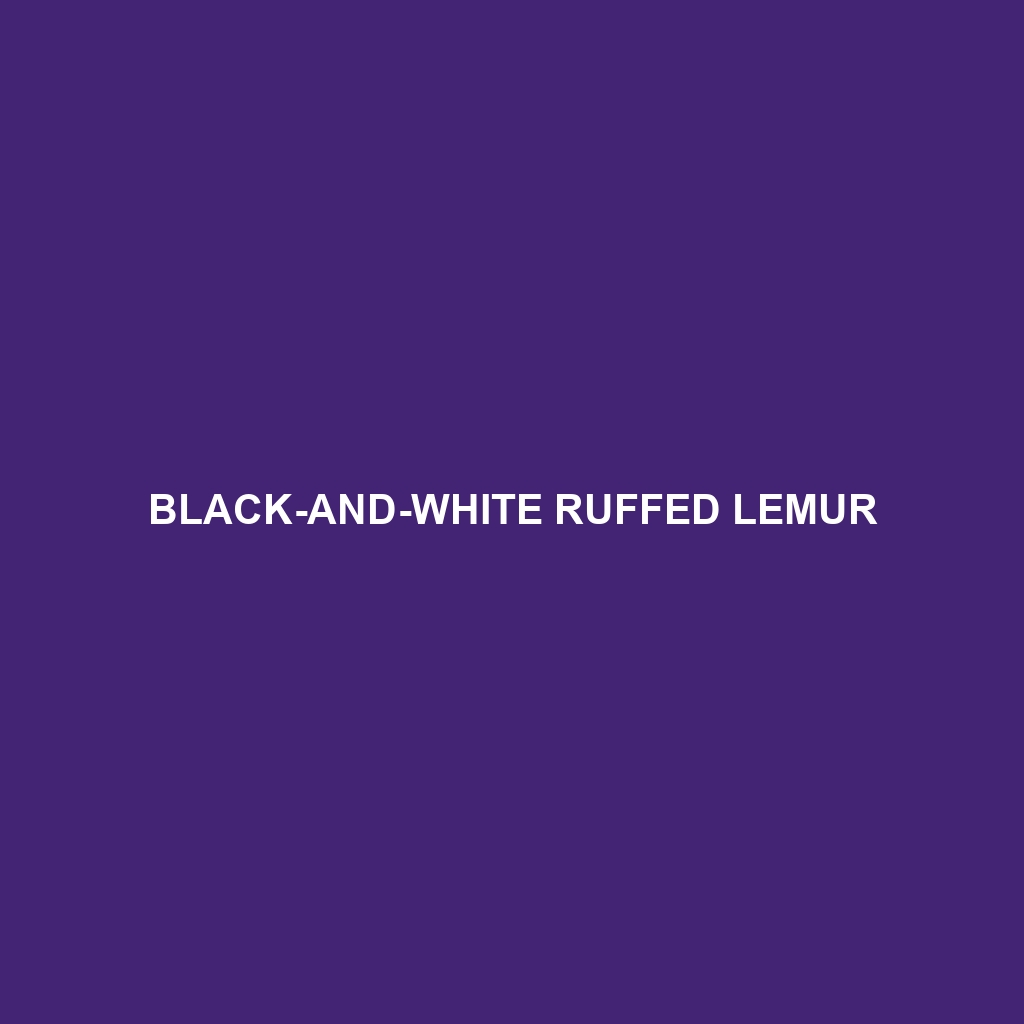Black-and-white Ruffed Lemur
Common Name: Black-and-white Ruffed Lemur
Scientific Name: Varecia variegata
Habitat
The Black-and-white Ruffed Lemur is primarily found in the lush rainforests of Madagascar, particularly in the eastern rainforests of the island. These lemurs thrive in moist, dense vegetation, often in regions that offer both canopy and forest floor habitats. They prefer areas with rich biodiversity, which provides essential resources such as food and shelter. Their habitat range typically extends from the Madagascar lowland forests to the higher altitude rainforests.
Physical Characteristics
Black-and-white Ruffed Lemurs are medium-sized primates, measuring between 18 to 22 inches in length, excluding their long bushy tails, which can add another 24 inches. They exhibit striking black fur with white markings around their face, arms, and legs, giving them a distinctive appearance. Their large, expressive eyes and a loud ruffed collar of fur around their neck enhance their visual appeal. These features make them one of the most recognizable species among the lemurs.
Behavior
These lemurs are highly social animals and typically live in small family groups. Their behavior includes a strong vocal communication system that comprises barking and howling, which can often be heard echoing through their forest habitat. Black-and-white Ruffed Lemurs are also diurnal, meaning they are active during the day. They are known for their playful antics, particularly when interacting with family members, and exhibit strong bonds within their groups.
Diet
The diet of the Black-and-white Ruffed Lemur is primarily frugivorous, as they predominantly consume fruits. They are also known to eat leaves, flowers, and nectar, making them important pollinators within their ecosystem. Their feeding habits are critical in seed dispersal, aiding in forest regeneration. Their preference for ripe fruit leads to substantial movement throughout the forest in search of food sources.
Reproduction
Black-and-white Ruffed Lemurs typically breed once a year, with the mating season occurring between late spring and early summer. After a gestation period of about 100 days, females usually give birth to two to three offspring. The young are born with soft fur and rely on their mothers for nutrition and protection during their initial months of life. The mother plays a vital role in their upbringing, teaching them foraging skills as they grow.
Conservation Status
The Black-and-white Ruffed Lemur is currently classified as Critically Endangered by the International Union for Conservation of Nature (IUCN). Major threats to their survival include habitat loss due to deforestation, hunting, and the illegal pet trade. Conservation efforts are crucial in protecting their remaining habitats and ensuring their survival in the wild.
Interesting Facts
Black-and-white Ruffed Lemurs are known to be one of the largest lemurs in Madagascar, and they boast the ability to leap from tree to tree with remarkable agility. They play a significant role in maintaining the ecological balance in their habitat. Interestingly, they are one of the few lemur species that can only be found in the wild in Madagascar, which adds to their uniqueness and conservation importance.
Role in Ecosystem
As vital members of the rainforest ecosystem, Black-and-white Ruffed Lemurs contribute significantly by aiding in seed dispersal through their fruit-centric diet. By consuming a variety of fruits and excreting the seeds, they help promote forest growth and regeneration. Additionally, their interactions with other species in the habitat create a dynamic ecological environment, showcasing the interconnectedness of forest wildlife.
